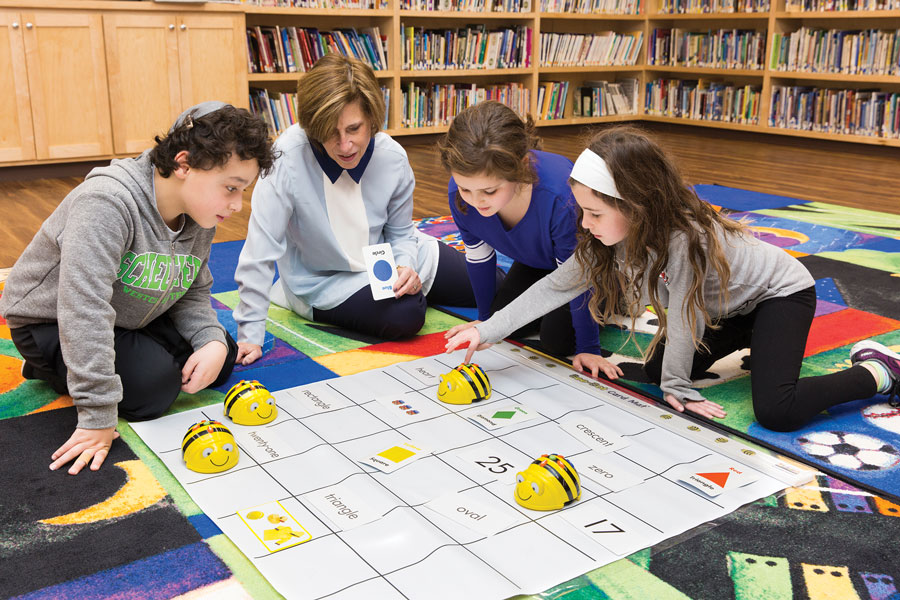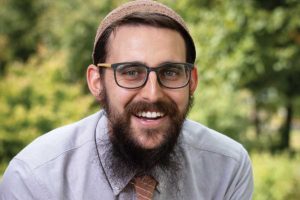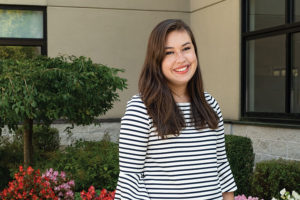Amy Eagle didn’t expect to have a career teaching technology to elementary-aged kids. Eagle, who has an MBA in Information
Systems from NYU, began her career at a company that was eventually acquired by IBM. While serving as board president at her children’s day school, she fell in love with education, got an MS in Educational Technology from Pace, and is now the Lower School technology teacher at Schechter Westchester.
Eagle’s goal is to make technology education not only fun, but also meaningful. She subtly integrates the concept of “digital citizenship” into a skills-based curriculum, which scaffolds age-appropriate skills for SW students. When she introduces foundational skills like keyboarding and using the mouse to second graders (whom she co-teaches with Media Specialist Rita Nichols), she is also teaching them about safely sharing (or not sharing) personal information online. Third graders, also co-taught by Nichols, learn how to conduct a safe online search. She teaches fourth graders about “netiquette” (online etiquette), and fifth graders are introduced to the concept of intellectual property, which helps them avoid plagiarizing.
Eagle is passionate about providing her students with a moral and social compass for navigating the digital world. She says, “Our children are digital natives. They have grown up with tablets in their hands. But they need to know more than what they can discover on their own. They need instruction to unlock skills, to know the full potential of a program. Most importantly, they need to know how to be digital citizens, to have kavod (respect) for their neighbors in the digital world.”
Eagle also teaches students about coding and robotics, two of the most popular topics she covers in her classes. She uses different coding resources for each grade, including The Foos, Kodable, Scratch Jr., and CodeMonkey. Third graders recently had the chance to choreograph a dance for “Dash” the robot using Blockly, a coding program that is intuitive and visual. “My favorite part is when the children get up to dance with the robots,” says Eagle. “Sometimes the robots don’t do exactly what the kids intended, but this is great too, because every mistake is really just an opportunity to learn.”
SW values interdepartmental collaboration, and Eagle works closely with other teachers to integrate technology into multidisciplinary projects. She recently partnered on a fifth-grade biography project, Mi Ani (Who Am I?), in which students used art, technology, and Hebrew to create a video self-portrait of themselves. And she’s looking forward to using the Ozobots — robots that are good at following lines — for an upcoming map-making project in Judaic studies.


